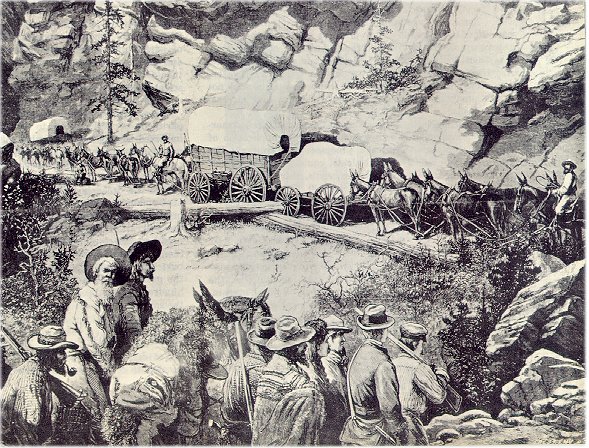
< Previous Page * Next Page >
In the west as throughout the country, agriculture remained the country's basic industry, at which the largest number of people worked, despite the giant strides of industry. And as manufacturing had developed in the decades foll owing the war, so was agriculture now undergoing a revolution. This involved a shift from husbandry to machine farming and from subsistence to commercial farming. Indeed, in the fifty years from 1860 to 1910, the number of farms in the United States trebled, increasing from 2,000,000 to 6,000,000; the area more than doubled from 400,000,000 acres to 880,000,000 acres. The production of wheat rose from 173,000,000 to 635,000,000 bushels, corn from 838,000,000 to 2,886,000,000 bushels, and cotton from 3,841,000 to 11,609,000 bales. More land was brought under cultivation in the thirty years after 1860 than in all the previous history of the United States. In the same period, the population of the nation more than doubled. Most of the increase was in the cities, but the American farmer grew enough grain and cotton, raised enough beef and pork, and clipped enough wool not only to supply American workers but to export ever increasing surpluses.
The expansion into the west largely explains this extraordinary achievement. Another factor was the application of machinery and science to the processes of farming. The farmer of 1800, using a hand sickle, could hope to cut half an acre of wheat a day. With the cradle, thirty years later, he might cut two acres a day. In 1840, Cyrus McCormick performed the miracle of cutting five or six acres a day with the curious machine he had been developing for nearly a decade. Farsighted, he headed west to the young prairie town of Chicago and established a reaper factory there. By 1860, a quarter of a million reapers had been sold.

|
| Drawn by the dicovery of silver mines in the Rocky Mountains in the 1870's, thousands of pioneers traveled westward. Here a caravan struggles up perilous log road to the mining town of Leadville, Colorado. |
Scarcely less important than machinery in the agricultural revolution was science. In 1862, with the passage of the Morrill Land-grant College Act, Congress appropriated public land to each state for the establishment of agricultural and industrial colleges. These were to serve both as educational institutions and as centers of research in scientific farming. Subsequently Congress appropriated funds for the creation of agricultural experiment stations throughout the country and also granted funds directly to the Department of Agriculture for research. By the beginning of the new century, scientists throughout the land were at work on agricultural research projects.
One of these scientists, Mark Carleton, traveled for the Department of Agriculture to Russia. There
he found and imported the rust and drought-resistant winter wheat which now makes up more than
half of the United States wheat crop. Other agricultural scientists made scarcely less important
contributions over the years. Marion Dorset conquered the dread hog cholera, George Mohler, the
menacing hoof-and-mouth disease. From North Africa, one researcher brought back Kaffir corn;
from Turkestan, another imported the yellow-flowering alfalfa. ![]() Luther Burbank in California
produced scores of new fruits and vegetables; in Wisconsin, Stephen Babcock invented a milk test
for determining the butter-fat content of milk; at Tuskegee Institute in Alabama, the great Negro
scientist, George Washington Carver, found hundreds of new uses for the peanut, the sweet potato,
and the soybean.
Luther Burbank in California
produced scores of new fruits and vegetables; in Wisconsin, Stephen Babcock invented a milk test
for determining the butter-fat content of milk; at Tuskegee Institute in Alabama, the great Negro
scientist, George Washington Carver, found hundreds of new uses for the peanut, the sweet potato,
and the soybean.
< Previous Page * Next Page >